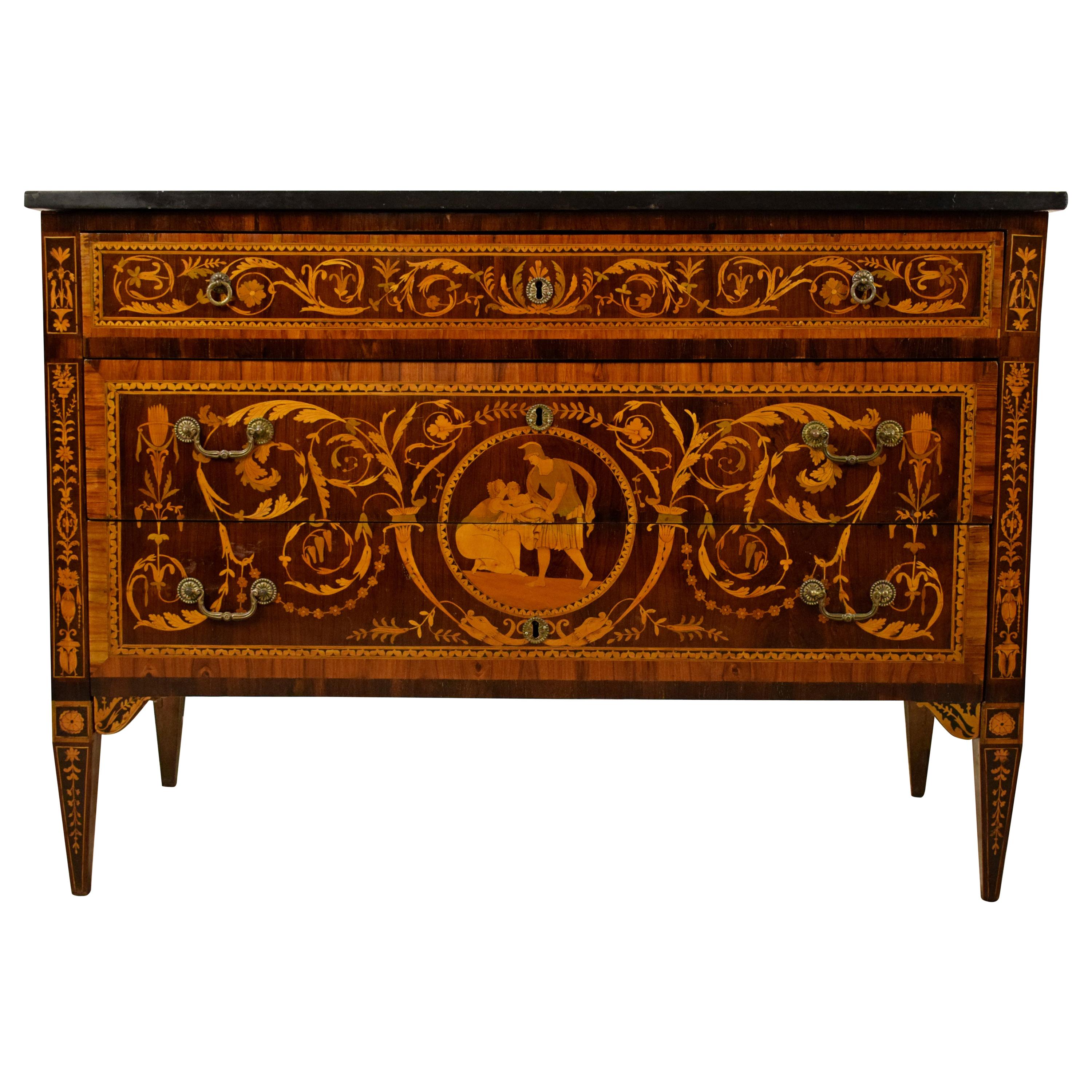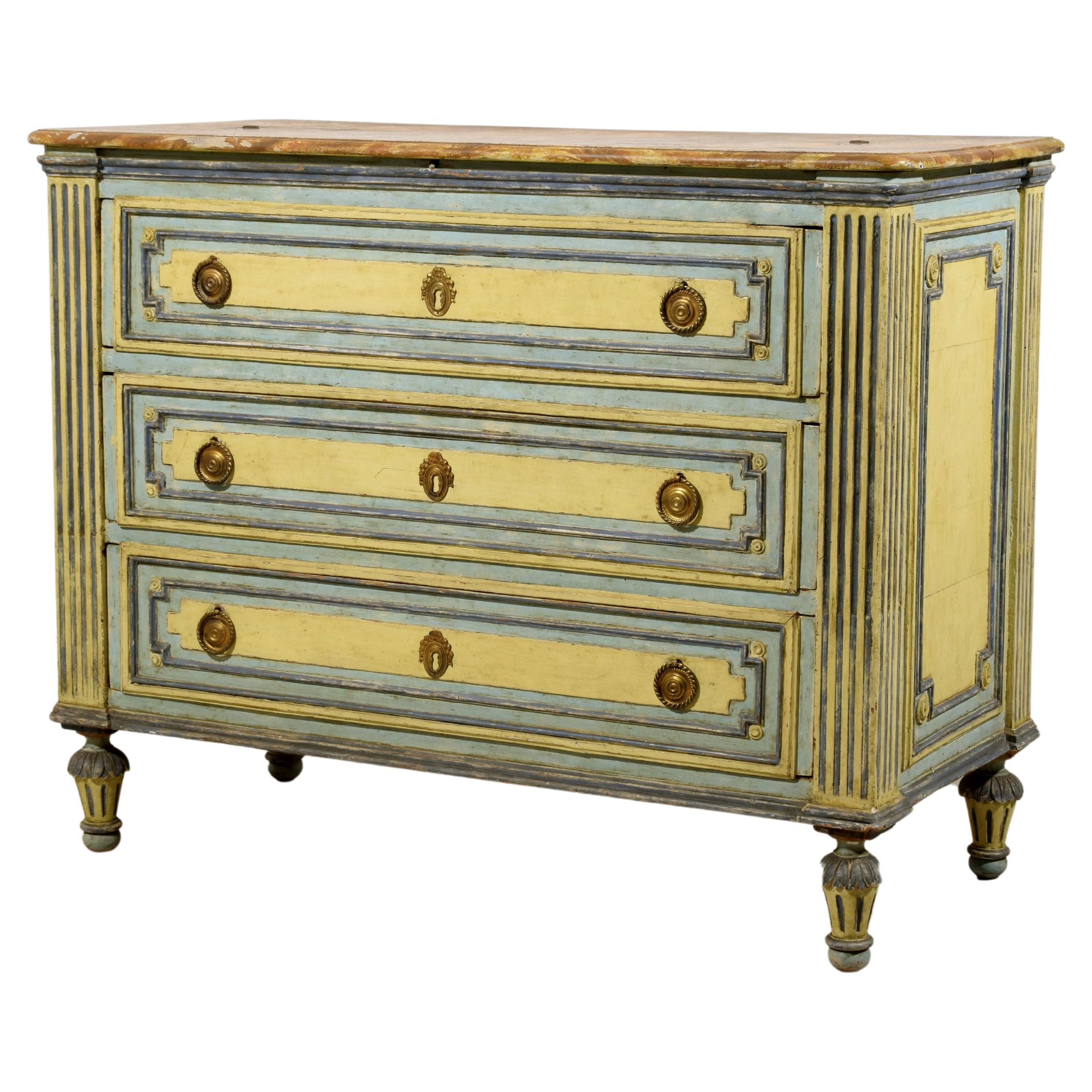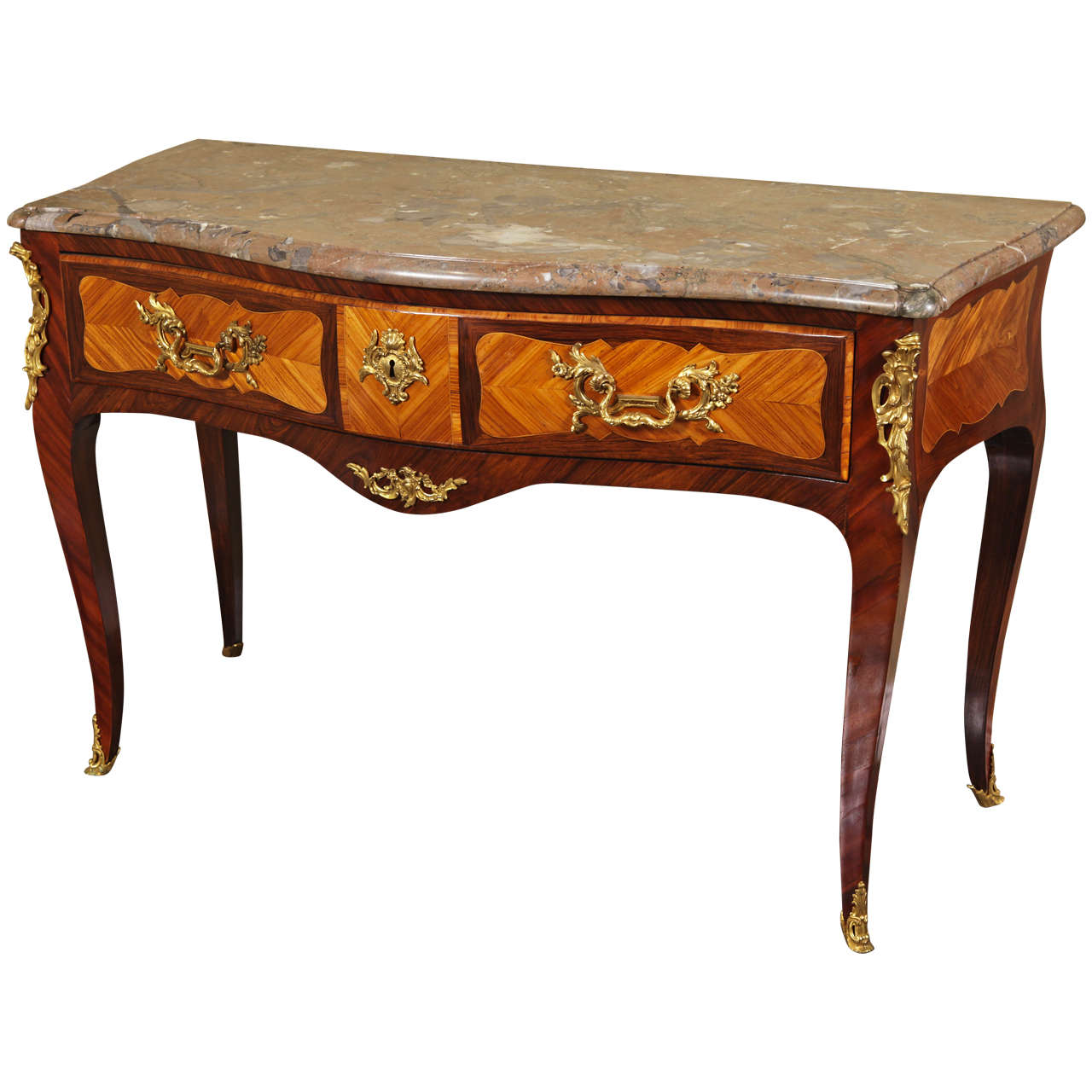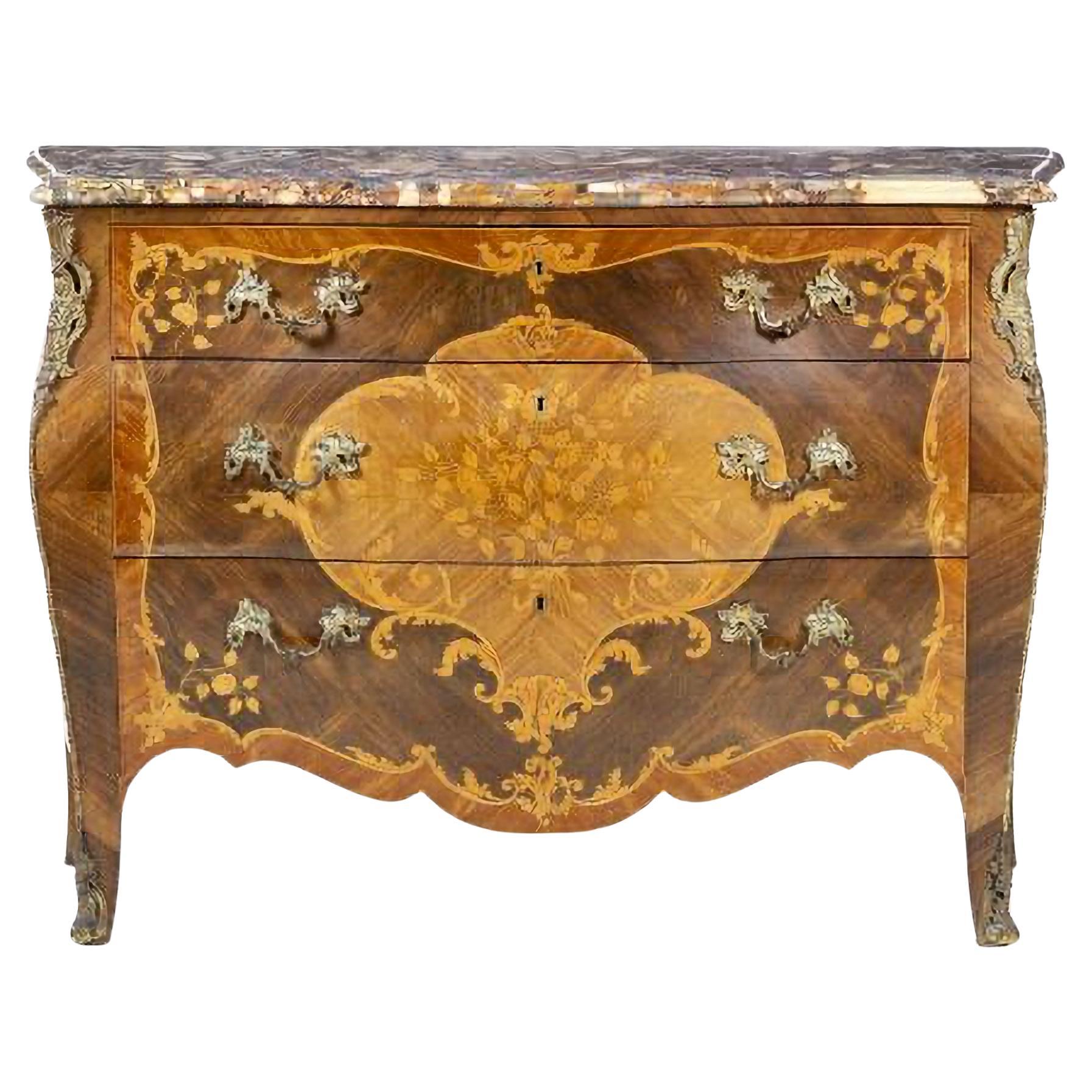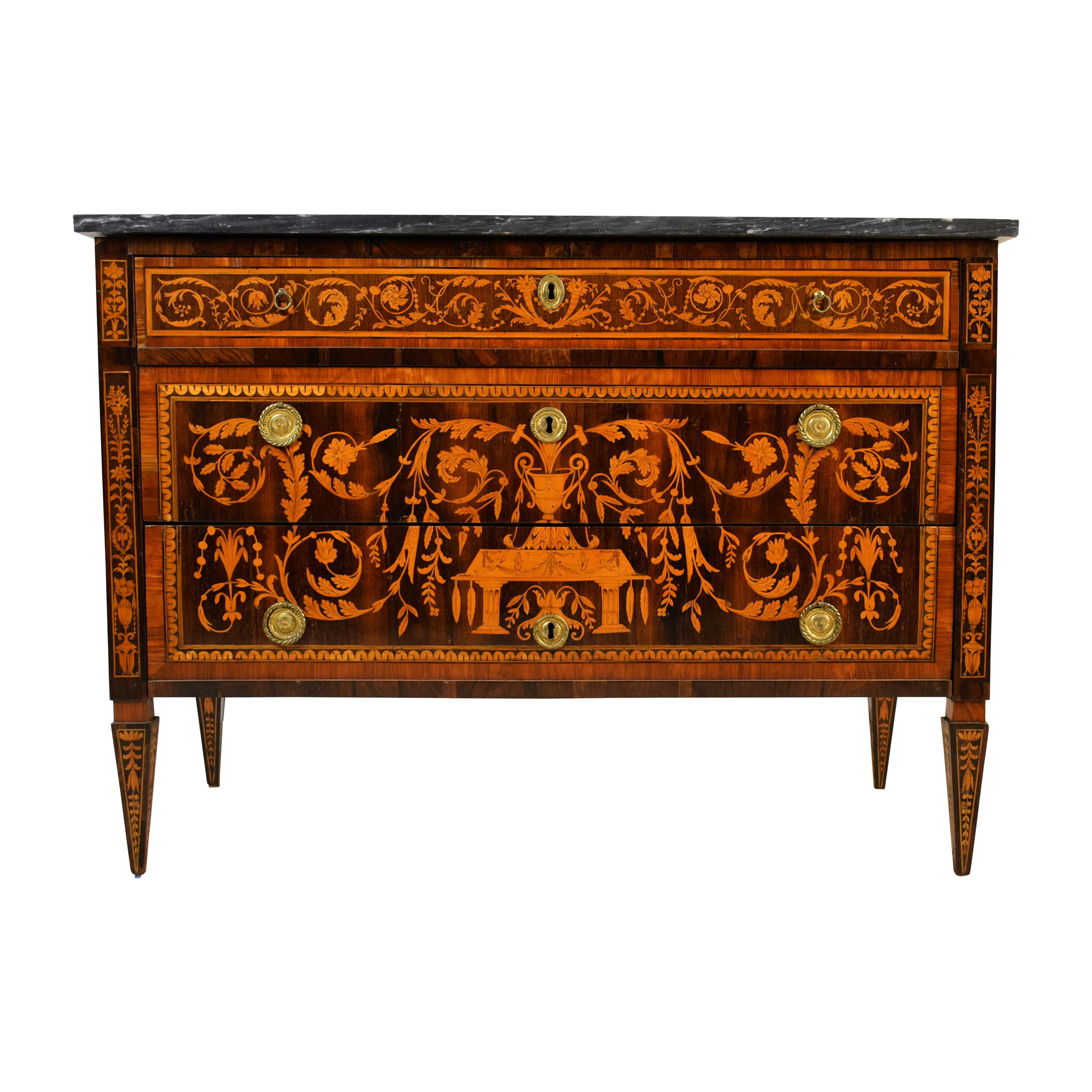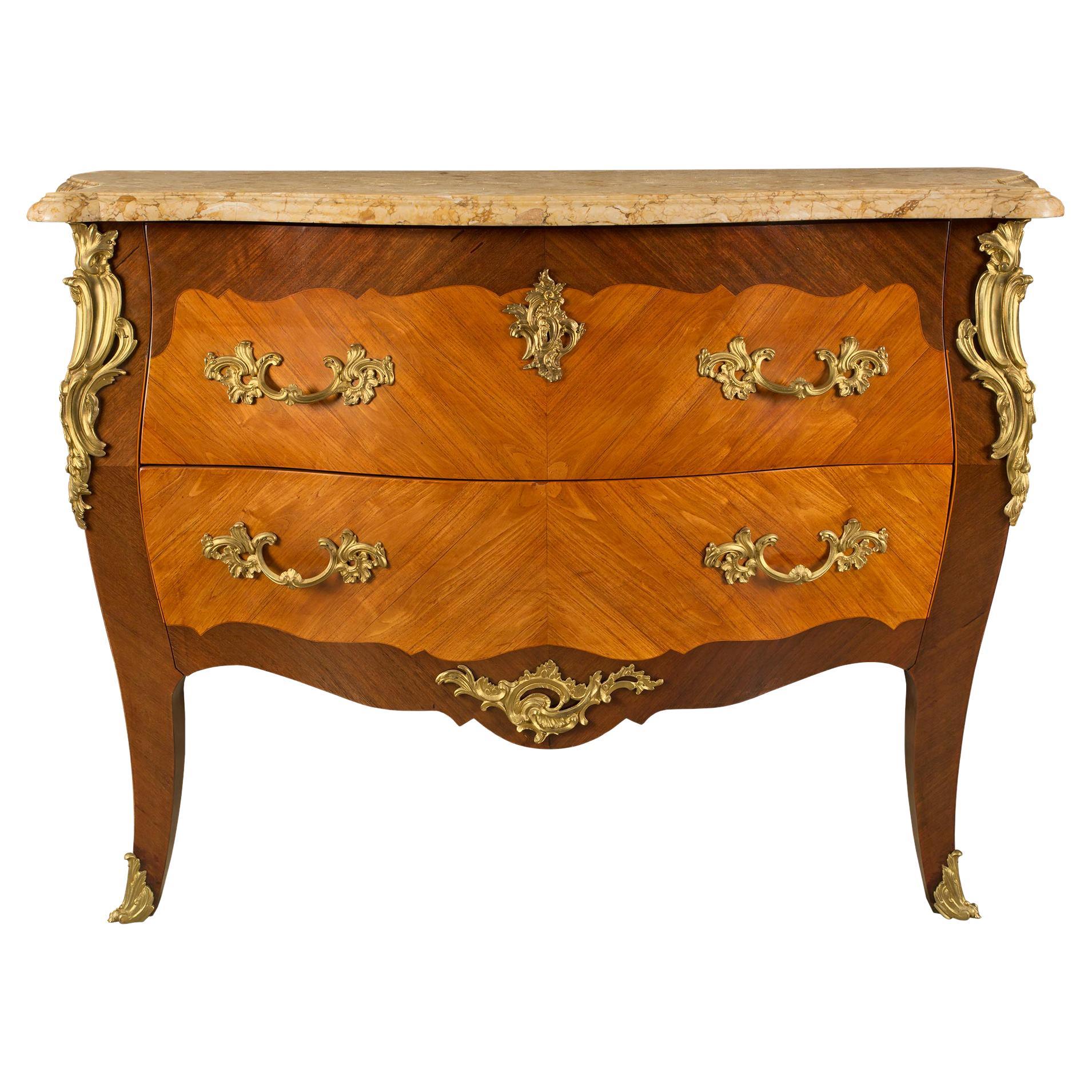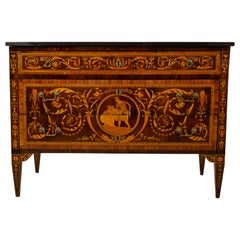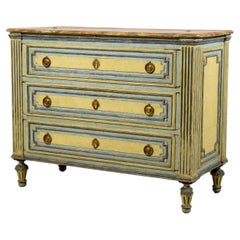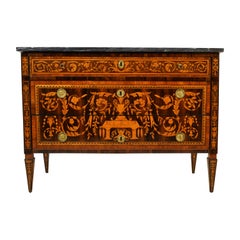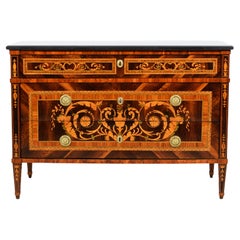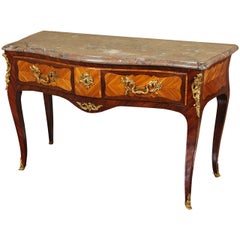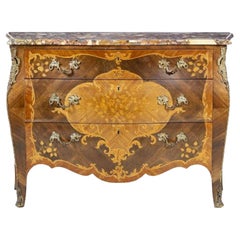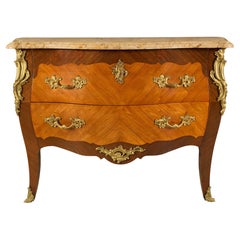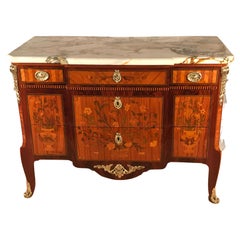Items Similar to 18th Century Italian Neoclassical Wood Dresser Attributed to Francesco Bolgiè
Want more images or videos?
Request additional images or videos from the seller
1 of 21
18th Century Italian Neoclassical Wood Dresser Attributed to Francesco Bolgiè
$315,600.32
£235,006.10
€265,000
CA$432,309.32
A$482,073.81
CHF 251,525.57
MX$5,915,227.44
NOK 3,201,519.75
SEK 3,033,370.42
DKK 2,017,348.83
Shipping
Retrieving quote...The 1stDibs Promise:
Authenticity Guarantee,
Money-Back Guarantee,
24-Hour Cancellation
About the Item
18th century Italian neoclassical carved, lacquered and gilded wood dresser attributed to Francesco Bolgiè (1752?-1834).
The fine and elegant commode is made of finely carved, lacquered and gilded wood. It presents several stylistic and material elements characteristic of the wooden works and of the furniture present in the Piedmont area, between the end of the 18th century and the beginning of the 19th century. The richness of the ornaments, the gold leaf, the iconographic program and the significant level of cabinet making that characterizes this furniture are testimony of a wealthy client and the valuable work of a sculptor at the service of noble and royal families. Stylistically can be attributed to the famous italian sculptor Francesco Bolgiè (1752-1834).
The front of the furniture and the two side are characterized by a complex decorative architecture. Two horizontal perimeter bands show gilded carved geometric patterns and palmettes on a blue lacquered backdrop. The low frame, in the centre and on the front, has a half-moon element inside which is finely carved a lion with two cupids and laurel branches. Near the corners, at the top, are carved a female faces, while at the bottom are some bees. The fretwork of the vertical bands draws strings that support a bunch of grapes with vine leaves. The side walls are lacquered in ochre yellow and, at the centre, a frame with acanthus leaves outlines a lacquered space in the tones of the ancient rose violaceous, with in the centre an ornate leaf with fine girali. On the four sides of this frame four large golden flowers harmonize the together.
The front, similar in composition, has a yellow ochre background, internal frame with palmettes and four flowers. The large internal space, lacquered in antique pink, shows in the center a woman’s fece with a composition of grapes and wheat ears; from the face depart fine phytomorphic girals with racemes, bunches of grapes and vine leaves. The nozzle of the original lock, placed on the front of the cabinet and on top, is in gilded bronze, chiselled with ribbon motif. The front panel opens downwards. The interior of the cabinet, entirely lacquered in red, has a shelf and therefore two compartments. The red color cinnabar deliberately recalls the characteristic Chinese lacquer, at the time much loved for the decorations to cineseria furniture. The special folding lock system, which allows the opening and closing of the front door, is the original one.
The commode rests on four conical wood legs witch are carved with acanthus leaves and small ramage, gilded and lacquered.
The top of the furniture is in grey marble bardiglio valdieri, lithotype that had great success in Piedmont, in the north of Italy, since the middle of the 18th century. On it were usually exposed bronzes, candlesticks, watches and sculptures.
The sculpted subjects refer to a precise iconographic programme.
The female head is identifiable in Ceres, Mother Terra, which in classical iconography is depicted with the head surrounded by a sert of wheat ears and a cluster of grapes. Ceres or Demeter in Greek, sister of Zeus, in Greek mythology is the goddess of fertility, the guardian of crops, protector of agriculture and wheat, constant nurse of youth and of the green earth, author of the cycle of seasons, life and death, protector of marriage and sacred laws.
The representation of Ceres, and its meaning, are linked to bees, symbol of virtue and chastity, allegory of Mother Earth, rebirth, mercy and justice. Just as the leaves of the vine and its fruits: in many cultures, from Greco-Roman to Christianity, the vine is a symbol of well-being, fruitfulness and blessing; it represents an abundant life and the joy that flows from it; it reflects the desire for fertility and beauty. It is also a sign of devotion to the fruits of the spirit and protection from evil. Fullness, wisdom, youth, maturation, prosperity are all images associated with the vine. Sacrifice, faith and good will are the qualities required for the vine to bear fruit.
The inverted bezel shows the iconographic image of Amor Vincit Omnia. One can observe a lion ridden by a cupid, while another putto meets him holding the head of the ferocious animal. The lion, symbol of royalty, wisdom, courage, strength and power, is tamed by love. Omnia vincit amor et nos cedamus amori (Love conquers everything, we surrender to love too) is a Latin phrase of Publio Virgilio Marone (Bucolic X, 69 – work begun in 42 B.C. and published around 39 B.C.). In quoting this verse there is widespread use of the syntax Amor Vincit Omnia, the inescapable power of love, which does not surrender to any obstacle.
The iconography of the verses of Virgil found here is very ancient and had great luck: there are examples already coeval to the author, although with small variations, in carved gems, mosaics, frescoes. The success of this image was perpetuated over the centuries, appearing in gilded bronzes, paintings, bas-reliefs, and is sometimes flanked by the allegory of the Earth, Cyber and Ceres. The author of this commode and his commissioner had to have an engraving from which they drew this image. In fact, we know several other works, including bronzes, paintings, ceramics of Staffordshire and Wedgwood, which present the same design, testimony of the presence of such a widespread print in a very ample European territory. Around the lion and the putti of these dresser are carved laurel branches. The laurel is an evergreen plant, a characteristic that gives the plant the symbol of immortality and when used alongside other symbols, as an iconic adjective, becomes the meaning of eternal and imperishable. The group of these subjects that symbolically refer to fertility, well-being and rebirth, prosperity and perennial love, dominant over everything, belong to a cultured and fine iconographic project that is well suited to a wedding gift of good omen. It is therefore probable that this dresser has been commissioned to a prestigious cabinet-maker such as Francesco Bolgiè on the occasion of the wedding of a high rank or noble family, able to compensate the artist charged for such a valuable work.
The artistic personality of Francesco Bolgiè (1752-1834) is at the top of italian Turin’s wooden sculpture in the last quarter of the 18th century and in the first decades of the 19th century and has played a very important role in neoclassical decorative wood sculpture. Artist of equal stature to that of Giuseppe Maria Bonzanigo, has however remained in the shadow for a long time.
Many of his works were attributed to Bonzanigo on the basis of stylistic comparisons, in the absence of precise archival research. The corpus of archival documents found in recent years has allowed to outline the figure of this important sculptor carver, reconstructing his life and allowing to return to his catalog several works, many of which are still kept in Turin in the Royal Palace and in the Hunting Palace of Stupinigi, others in famous private collections.
Francesco Bolgiè was born in Italy at Turin in 1752. He was the son of the carver Giovan Battista, a Milanese who became the artist of the king in 1756, who died in 1778, and who worked for the Savoys in the decoration of carriages. Giovanni Battista sent Francesco Bolgiè to Paris to perfect the art of carving and Carlo Emanuele III was immediately interested in the successes achieved in the French capital. In 1775 we know him as a member of the Compagnia di San Luca and in the same year Vittorio Amedeo III appointed him a royal wooden sculptor. He had worked for the residences of Venaria, Stupinigi, Villa della Regina and for the Carignano. Bolgiè also operated for some private individuals and he died in Turin, at the age of 82, on 6 January 1834.
The commode object of this study is elegantly carved according to the canons of the italian high cabinet making and has obvious stylistic proximity to the drawers by Francesco Bolgiè. The architectural structure of the furniture as a whole and, even more, some details, such as the thin girali, the leaves d'acanto, the female head and the neoclassical reliefs that refer to the ancient Greek and Roman art, the bow characteristic of Louis XVI, are typical of Bolgiè’s works.
It was recently attributed to Bolgiè a chest of drawers (casa d’aste Sotheby’s, London 03-07-2019) showing, in the decoration of the front, a female mask surrounded by garlands of flowers and fruit, very similar to Ceres carved in the commode studied here. The chest of drawers of London is also paired with another, present in the collection of Villa Ephrussi de Rothschild, in Saint-Jean-Cap-Ferrat.
Object accompanied by a "Certificate of Authenticity".
We apologize for any translation errors from the Italian language.
- Attributed to:Francesco Bolgié (Cabinetmaker)
- Dimensions:Height: 32.29 in (82 cm)Width: 52.76 in (134 cm)Depth: 23.23 in (59 cm)
- Style:Neoclassical (Of the Period)
- Materials and Techniques:
- Place of Origin:
- Period:
- Date of Manufacture:Late 18th Century
- Condition:
- Seller Location:IT
- Reference Number:1stDibs: LU4405230391602
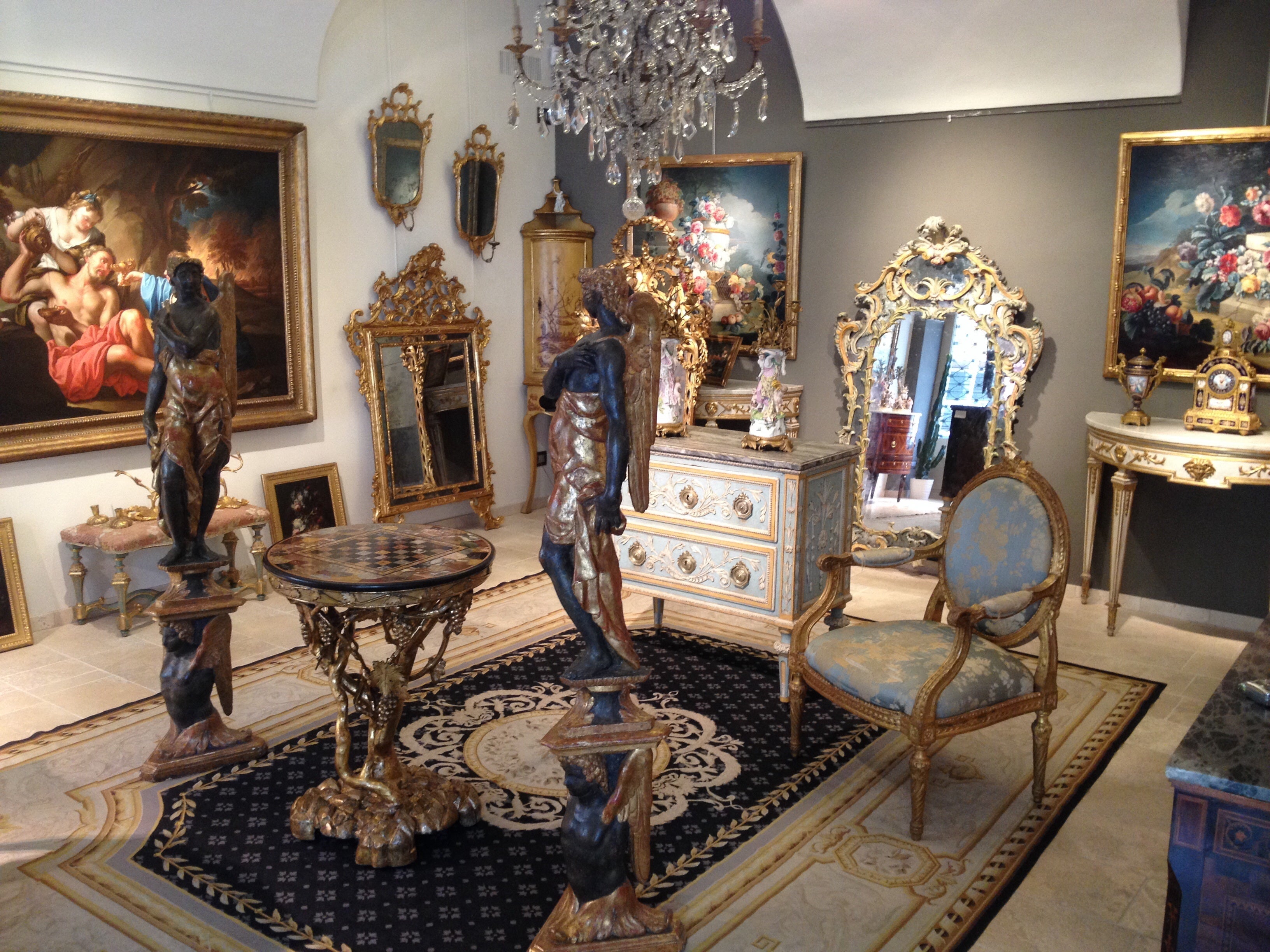
About the Seller
5.0
Platinum Seller
Premium sellers with a 4.7+ rating and 24-hour response times
Established in 1980
1stDibs seller since 2019
55 sales on 1stDibs
Typical response time: <1 hour
- ShippingRetrieving quote...Shipping from: Italy
- Return Policy
Authenticity Guarantee
In the unlikely event there’s an issue with an item’s authenticity, contact us within 1 year for a full refund. DetailsMoney-Back Guarantee
If your item is not as described, is damaged in transit, or does not arrive, contact us within 7 days for a full refund. Details24-Hour Cancellation
You have a 24-hour grace period in which to reconsider your purchase, with no questions asked.Vetted Professional Sellers
Our world-class sellers must adhere to strict standards for service and quality, maintaining the integrity of our listings.Price-Match Guarantee
If you find that a seller listed the same item for a lower price elsewhere, we’ll match it.Trusted Global Delivery
Our best-in-class carrier network provides specialized shipping options worldwide, including custom delivery.More From This Seller
View All18th Century, Italian Neoclassical Inlaid Chest of Drawers, Marble Top
Located in IT
18th century, Italian neoclassical inlaid chest of drawers with marble top
This refined neoclassical chest of drawers was made...
Category
Antique Late 18th Century Italian Neoclassical Commodes and Chests of Dr...
Materials
Bronze
$34,109 Sale Price
20% Off
18th century, Italian Neoclassical Lacquered Wood Chest of Drawers
Located in IT
18th century, Italian Neoclassical Lacquered Wood Chest of Drawers
This neoclassical chest of drawers was made in Piedmont in the second half of the 18th century, in carved and lacq...
Category
Antique Late 18th Century Italian Neoclassical Commodes and Chests of Dr...
Materials
Wood
18th Century, Italian Neoclassical Inlaid Wood Chest of Drawers
Located in IT
18th century, Italian neoclassical inlaid wood chest of drawers
This refined neoclassical chest of drawers was done around the end of the 18th century in Genoa (Italy). The cabinet ...
Category
Antique Late 18th Century Italian Neoclassical Commodes and Chests of Dr...
Materials
Wood, Boxwood, Nutwood
$39,794 Sale Price
20% Off
18th Century, Italian Neoclassical Inlaid Chest of Drawers with Marble
Located in IT
18th century, Italian Neoclassical Inlaid Chest of Drawers with Marble Top
This refined neoclassical chest of drawers was made...
Category
Antique Late 18th Century Italian Neoclassical Commodes and Chests of Dr...
Materials
Wood, Nutwood
18th century, Italian Half-moon Lacquered Wood Chest of Drawers
Located in IT
18th century, Italian Half-moon Lacquered Wood Chest of Drawers
This refined neoclassical half-moon chest of drawers was made in Turin, towards the end of the 18th century. Entirely...
Category
Antique Late 18th Century Neoclassical Commodes and Chests of Drawers
Materials
Marble
18th Century, Italian Policrome Lacquered Wood Chest of Drawers
Located in IT
18th century, Italian Policrome Lacquered Wood Chest of Drawers
This small and elegant chest of drawers was made in Genoa, northern Italy, around the middle of the eighteenth century. This model of dresser is inspired by the models that spread in France in the Louis XV period and to which all the cabinet makers were immediately inspired. It consists of four drawers, of which two smaller upper. It has a wooden structure entirely lacquered in light ocre decorated with floral and foliate decorations and compositions of still life of fruit in shades of red. The handles and mouthpieces of the locks are in finely chiseled burnished bronze, typical of the Louis XV era. The molded top is in Rosso Francia marble, a marble from abroad that at the time was very precious and expensive. The dresser has the front and the sides moved by the move line, legs thin and slightly curved. The front legs are embellished with burnished bronze chiseled tips shaped like acanthus leaf.
This piece of furniture is quite rare because of its small size that make it easy to fit into any environment. Very decorative due to its sinuous lines and its fine decoration, it is suitable both next to antique furniture...
Category
Antique Mid-18th Century Italian Rococo Commodes and Chests of Drawers
Materials
Marble, Bronze
$30,319 Sale Price
20% Off
You May Also Like
A Late 18th to Early 19th Century French Louis XV Console
Located in Dallas, TX
A late 18th c to Early 19th c French Louis XV consoles with marble tops. The consoles /sideboards have drawers and beautiful gilt bronze decora...
Category
Antique 19th Century Sideboards
Materials
Marble
LOUIS XV STYLE CHEST OF DRAWERS Portuguese, 19th century
Located in Madrid, ES
LOUIS XV STYLE CHEST OF DRAWERS Portuguese, 19th century
Made of various types of wood, with three large drawers.
Box domed at the front and sides.
Hardware and applications in gold...
Category
Antique 19th Century Portuguese Baroque Commodes and Chests of Drawers
Materials
Wood
French 19th Century Louis XV St. Chest
Located in West Palm Beach, FL
An important French mid-19th century Louis XV st. Tulipwood and Kingwood two drawer chest. The whole raised on impressive cabriole legs has two drawers with a quarter veneered Tulipw...
Category
Antique 19th Century French Louis XV Commodes and Chests of Drawers
Materials
Marble, Ormolu
Louis XV Transition Style Chest of Drawers, France, 19th Century
Located in Belmont, MA
This gorgeous Louis XV Transition Style chest of drawers was made in the mid 19th Century.
The chest has an extraordinary flower marquetry. The three drawer commode's front is struct...
Category
Antique 1860s French Louis XVI Commodes and Chests of Drawers
Materials
Kingwood, Mahogany, Satinwood
$9,800 Sale Price
30% Off
Italian 18th Century Neoclassical Period Walnut Chest
Located in West Palm Beach, FL
A handsome Italian Neo-Classical 18th-century walnut chest. The rectangular-shaped chest is raised by four straight tapered legs leading to the scalloped apron. Above is a door openi...
Category
Antique 18th Century Italian Neoclassical Commodes and Chests of Drawers
Materials
Carrara Marble
19th Century French Louis XV Style Commode or Chest
Located in Houston, TX
19th Century French Louis XV Style Commode or Chest.
This stunning French Louis XV style ebonized two drawer chest has beautiful gilt bronze hardware and the original locks and key....
Category
Antique Late 19th Century French Louis XV Commodes and Chests of Drawers
Materials
Bronze
More Ways To Browse
Antique Wood Levels
Neoclassical Relief
Antique Italian Wood Carvings
18th Century Icon
Antique Wood Roses
Acanthus Wood Carving
Italian Bas Relief
Wood Bas Relief
Lion Head Wood Furniture
Neoclassical Wood Carving
Carved Wood Bow
Wood Putti
Wood Fretwork
18th Century Putti
Italian Carved Wood Century Figure
Zeus Italy
Large Neoclassical Painting
Wood Corpus
